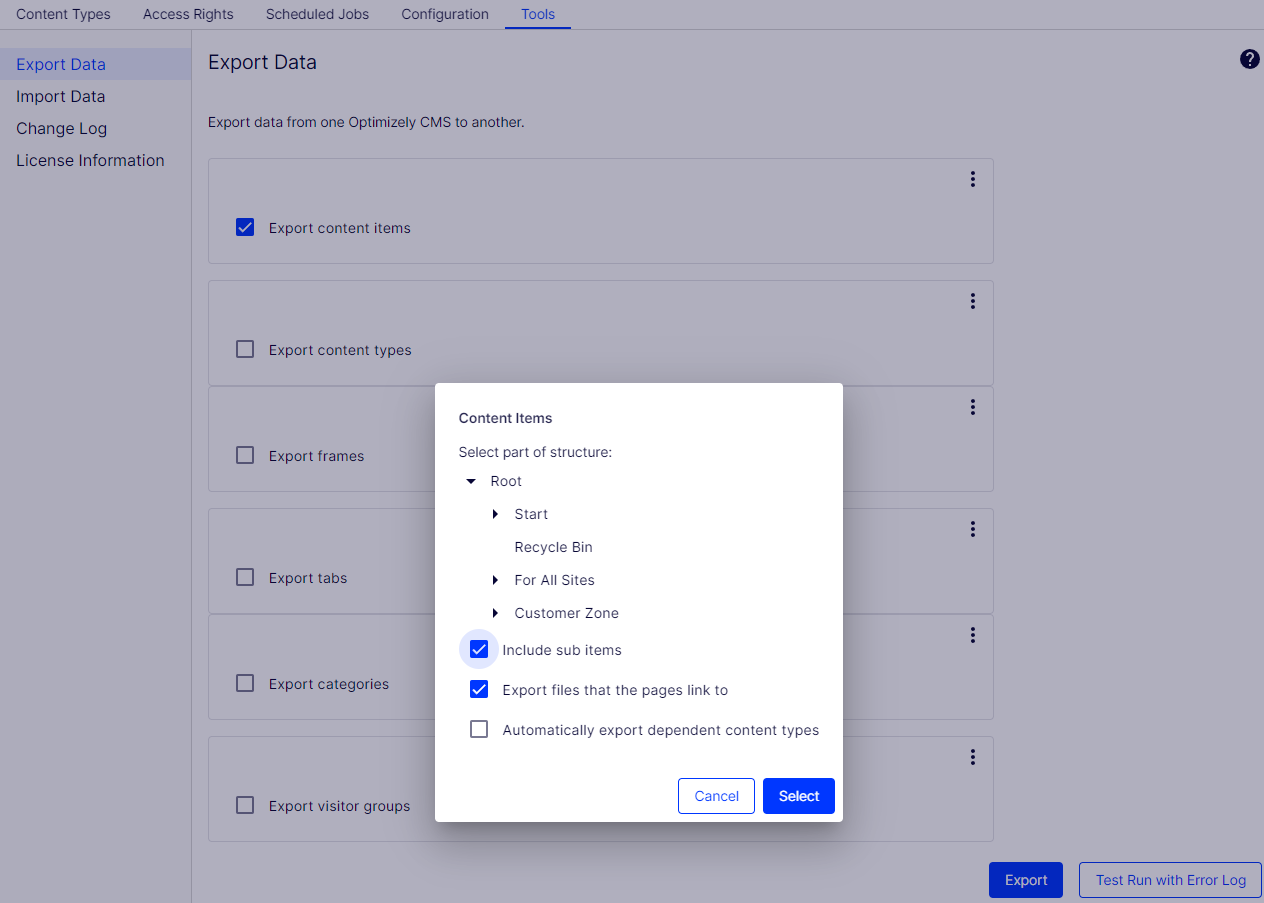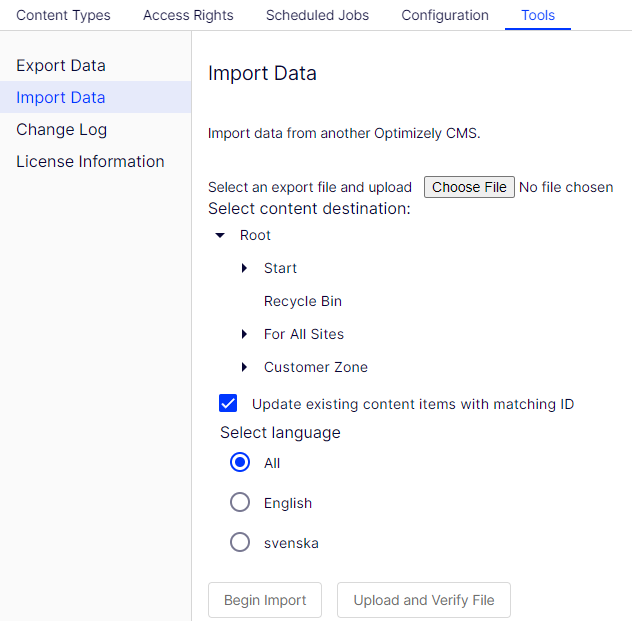 Exporting and importing data
Exporting and importing data
This topic is intended for administrators and developers with administration access rights in Optimizely.
You can export and import data between Optimizely websites. This function is widely used by developers building new functionality in a test or development environment. When you complete work and the information is ready for the production environment, use the export and import features to transfer the data between websites.
Exporting data
You can export the following: content items, content types, frames, dynamic property definitions, tabs, categories, files, and visitor groups.
Select a type of item to export, to display the available items of that type.

To export content items
- Go to Admin > Tools > Export data.
- Select an item to export. If your content items contain multiple language versions, all language versions are included in the export package.
- Optional: Select any of the three check boxes:
- Include sub items. Exports the item's children as well.
- Export files that the pages link to. Exports global assets (such as blocks and images and so on) that the selected item links to.
Local assets (saved under For this Page) are included in the export.
- Automatically export dependent content types. This option is mostly used for older untyped pages, and specifies that the content type is included in the export. For newer, typed pages or if the import website already has this content type, it is not necessary to select this option.
- Click Select to accept your export settings.
- Click Export to download the file package. Your export package is saved to your web browser's default download location.
To update a single content item through export and import: deselect Include sub items and export the item. Then import the item and make sure Update existing content items with matching ID is selected.
Importing data
With the Import Data function, you can retrieve information exported from the same or another Optimizely website.

- Go to Admin > Tools > Import Data.
- Click Choose File and select the file package to import. Files must end with *.episerverdata for the import to work.
- Select the destination for the imported files.
- Select or deselect Update existing content items with matching ID:
- Select the check box if you want to keep the same GUID Stands for "globally unique identifier"s for imported items (such as pages, blocks and files) as they had on the exporting site. The import checks whether a GUID already exists and, if it does, that item is updated (if the imported item had a changed date that is later than the existing item). This means that content items with the same IDs are replaced instead of added.
If your exported pages contained links to global blocks and media, you must select Export files that the pages link to when exporting, for the linked global blocks and media to be updated during the import.
- Deselect the check box if you want to import items with new IDs instead. If you import to the same website as you exported from, blocks and media are merged into folders with the same name in the assets pane.
Duplicated items get a number added to the item name. For example, exporting item ABC and importing it as a copy on the same website results in two items, namely ABC and ABC2. This also affects the URL, which in the case of the copied item would be www.examplesite.com/abc2.
- Select the check box if you want to keep the same GUID Stands for "globally unique identifier"s for imported items (such as pages, blocks and files) as they had on the exporting site. The import checks whether a GUID already exists and, if it does, that item is updated (if the imported item had a changed date that is later than the existing item). This means that content items with the same IDs are replaced instead of added.
- If your export package contains multiple language versions, select All if you want to import all language versions or one specific language to import only that language version.
- Click Upload and Verify File to verify the file content. The files are read and checked, and verification information appears.
- Click Begin Import.